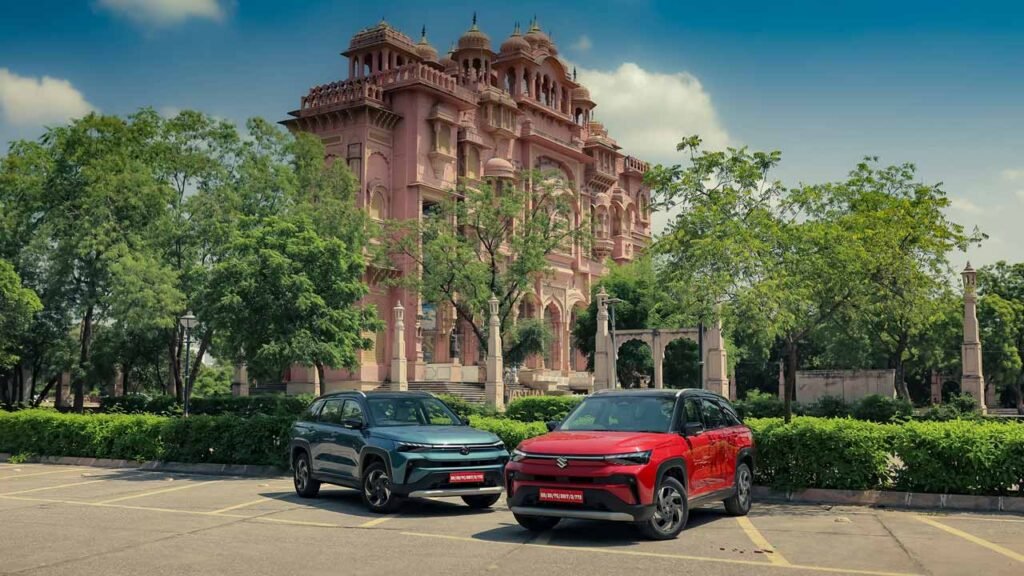It’s impossible to talk about certain cars without bringing up their rivals. Case in point: the newly launched Maruti Suzuki Victoris. Its prime competitor? The undisputed king of the mid-size SUV segment — the Hyundai Creta.
At a starting price of ₹10.5 lakh (ex-showroom), the Victoris undercuts the Creta by about ₹60,000. While the margin might not sound massive, in India’s price-sensitive market, even that could tip the scales.
The Victoris is aimed squarely at younger audiences — Millennials and Gen Z — the demographic with growing spending power and a penchant for tech-laden, aspirational products.
And on that front, Maruti has made sure the Victoris is packed with modern features. The question is: does it truly have what it takes to challenge the Creta? Let’s dive in.
Quintessentially Maruti Design
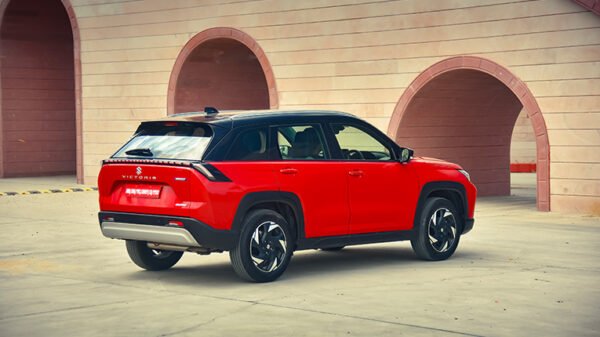
The Victoris avoids the over-styled look that plagues many new SUVs, and that’s a relief. It doesn’t shout for attention, but instead carries a clean, confident, and unmistakably Maruti design language.
Its front is inspired by the e-Vitara, with slim LED DRLs and a modest chrome bar that isn’t too flashy.
It’s got 17-inch turbine-style alloys that add a dash of sharpness to the whole affair.
As for its rear, it’s headlined by connected LED tail lamps with a unique scattered glow effect.
At over 4.3 metres long, the Victoris sits firmly in mid-size SUV territory, being larger than the Brezza, but not quite as wide as the Creta. The dimensions allow for a respectable 370 litres of boot space.
A clever detail is in the CNG variant, which hides the CNG assembly completely under the floor, leaving the boot unobstructed. However, a notable downside is that none of the variants offer a spare tyre.
Interiors & Tech – A Big Step Up
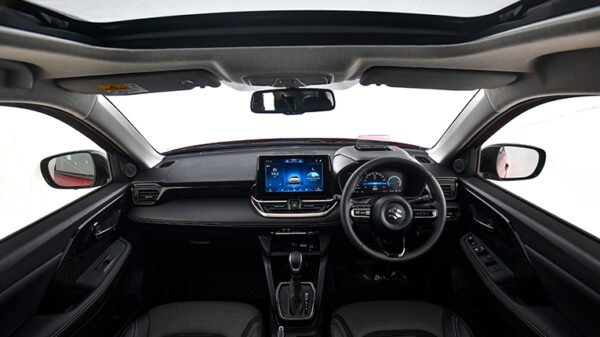
One look at the interiors and you’ll quickly notice how much Maruti has levelled up.
The Victoris’ cabin feels a notch above anything seen so far in Arena showrooms.
Its dual-tone dashboard ships with a layered design, soft-touch materials, and 64-colour ambient lighting. It’s got a rather large 10.25-inch fully digital cluster, which is a first for Maruti. And infotainment is taken care of by a 10.1-inch SmartPlay Pro X touchscreen paired with an 8-speaker Infinity system that’s tuned for Dolby Atmos.
Dolby Atmos in cars is still new, but when compatible music plays, it creates a theatre-like surround experience. The only caveat is that not all apps support it yet — Spotify being a notable omission.
The other standout features on this car include a gesture-controlled powered tailgate, ventilated eight-way adjustable front seats, wireless charging, a PM2.5 air filter, and, of course, a panoramic sunroof — because no Indian car-buying checklist is complete without asking, “Issmein sunroof aata hai?”
Safety – Maruti Redeems Itself
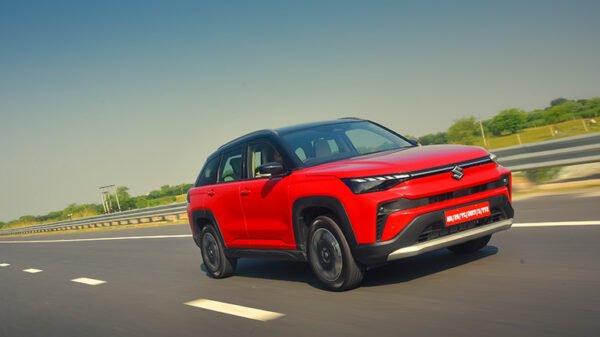
Historically, safety hasn’t been Maruti’s strongest suit. The Victoris changes that narrative.
The Victoris has received 5-star ratings from both Bharat NCAP and Global NCAP.
And then there’s Level 2 ADAS as well. The Victoris is the first Maruti to offer this, including Adaptive Cruise Control, Lane Keep Assist, and Autonomous Emergency Braking. During our short test run in Jaipur, the system performed impressively well.
The standard kit includes a set of six airbags, ABS with EBD, a 360-degree camera, and TPMS.
Drivetrains – Focused on Efficiency, Not Thrills
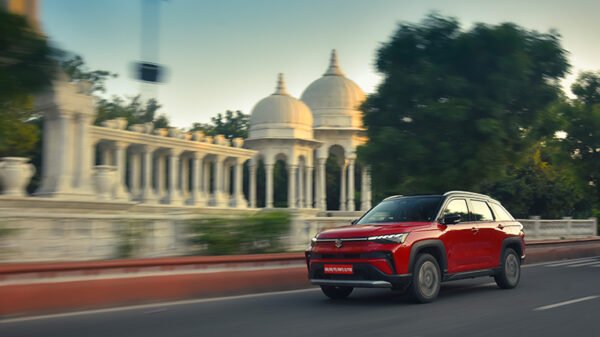
The Maruti Suzuki Victoris offers a wide range of powertrain choices, ensuring there’s something for almost every kind of buyer.
The lineup starts with the 1.5-litre mild-hybrid petrol, which can be had in front-wheel-drive guise with either a 5-speed manual or a 6-speed automatic, or in an all-wheel-drive configuration paired exclusively with the 6-speed automatic.
With 101 bhp on tap, this setup is designed for smooth and predictable performance, leaning more toward efficiency and refinement than outright pace.
Then there’s the 1.5-litre strong-hybrid petrol, available only with front-wheel drive and an e-CVT transmission.
On paper, it makes a slightly lower 91 bhp, but thanks to electric motor assistance, it feels more effortless in the city and delivers an outstanding 28.65 km/l, making it one of the most fuel-efficient SUVs in India right now.
For those focused on running costs, Maruti also offers a 1.5-litre CNG option, which produces 89 bhp, pairs exclusively with a 5-speed manual, and returns 27.02 km/kg, all while cleverly hiding the CNG tank under the floor so boot space remains uncompromised.
Driving Impressions
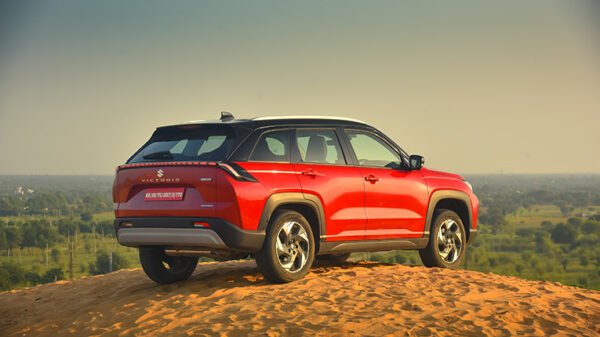
On Jaipur’s highways and city roads, the Victoris feels tuned for comfort and ease rather than excitement.
Its steering is lightweight and great for city use, but lacks weight and feedback at higher speeds compared to the Creta.
As for the engine, it’s smooth and clean-revving, but gets vocal past 3,500 rpm. Performance is linear, not punchy.
And the car feels extremely heavy, given how weak its acceleration is.
The 5-speed manual gearbox that we tested prioritised smoothness over snappiness.
In short, the Victoris is a calm cruiser — not a thrill machine. It’s built for refinement, efficiency, and family-friendly comfort.
Verdict – A Smarter Alternative to the Creta?
The Maruti Victoris is smooth, well-equipped, efficient, and safe. It won’t deliver thrills like a turbo-petrol Creta, but it undercuts it on price, offers a hybrid powertrain with stellar mileage, and comes loaded with tech like Dolby Atmos, ADAS, and a panoramic sunroof.
At Rs 10.5 lakh onwards, the Victoris is not a Creta-killer — at least not yet. But it is a very compelling Creta alternative, and for many buyers, it may even be the smarter pick.


